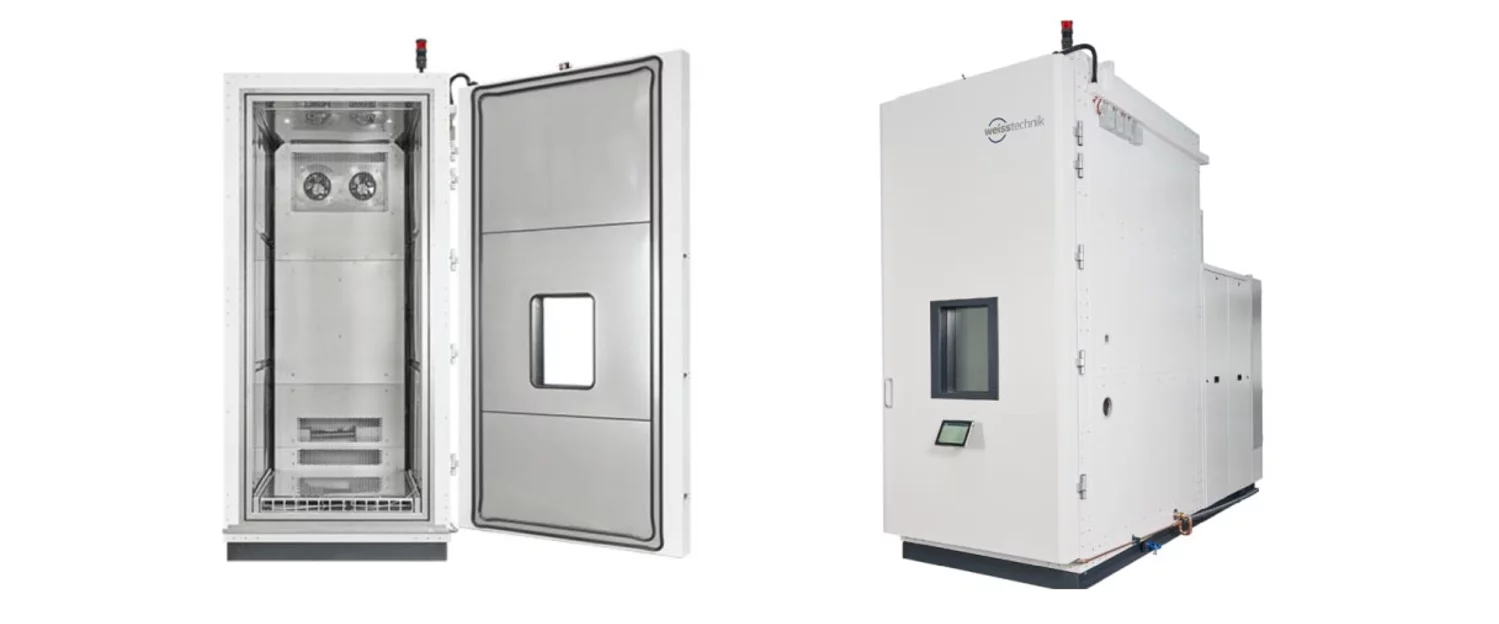The Reiskirchen-based system manufacturer is thus responding to the trend towards larger photovoltaic modules with a new test chamber. The modified unit structure is about three metres high and has a chamber volume of five cubic metres – enough space for the XXL solar panels of the future. Furthermore, the test chamber is made of high-grade stainless steel and is completely welded. In addition, all components are made of a corrosion-resistant alloy.
Expansive market, expansive dimensions: in order to increase efficiency, the rapidly growing photovoltaic sector is relying on 700 watt solar panels weighing almost 40 kilograms with a surface area of up to three square metres. In order to be able to test the ever larger solar modules in accordance with the standard IEC 61215, developers, laboratories and manufacturers require suitably designed test units – such as the innovative ClimeEvent-PV from Weiss Technik.
Even taller cabinet with special design
The tall yet slim and thus space-saving ClimeEvent-PV has been extended upwards to a height of 2.70 metres to meet the new requirement. This enables large-surface solar panels to be placed upright in the test chamber, allowing this to remain compact. The test cells are also made of high-grade stainless steel and completely welded without silicone joints. The components inside the test space, such as heater and heat exchanger, are made of Incoloy®, a special nickel-iron-chrome alloy which is especially resistant to corrosion. This protects the test space and its components against damage through aggressive outgassing such as can occur during the testing of photovoltaic modules.
Fulfils all quality standards of the test standard IEC 61215
The durable photovoltaic test chamber can be used to perform all the tests necessary according to the standard specification: thermal cycling, damp heat and humidity freeze. During thermal cycling, the test specimen is cooled from 85 degrees Celsius to minus 40 degrees Celsius and the state is maintained for 10 minutes before it is heated up again. Damp heat is a marathon test – here the test specimen is subjected to a temperature of 85 degrees Celsius and 85 percent air humidity for 1000 hours, which leads to particularly high outgassing that the robust ClimeEvent-PV is able to take very well. The temperature during the humidity freeze test ranges between -40 and 85 degrees Celsius. The standard prescribes a temperature change rate of at least 1.6 Kelvin per minute, which the ClimeEvent-PV exceeds.
With the extended height of the cabinet, a test chamber volume of five cubic metres and the solid design, Weiss Technik offers a high-quality unit solution for ageing tests on large solar modules. There are also test chambers for smaller panels available, and it is also possible to have a customised solution manufactured for the on-site conditions.

